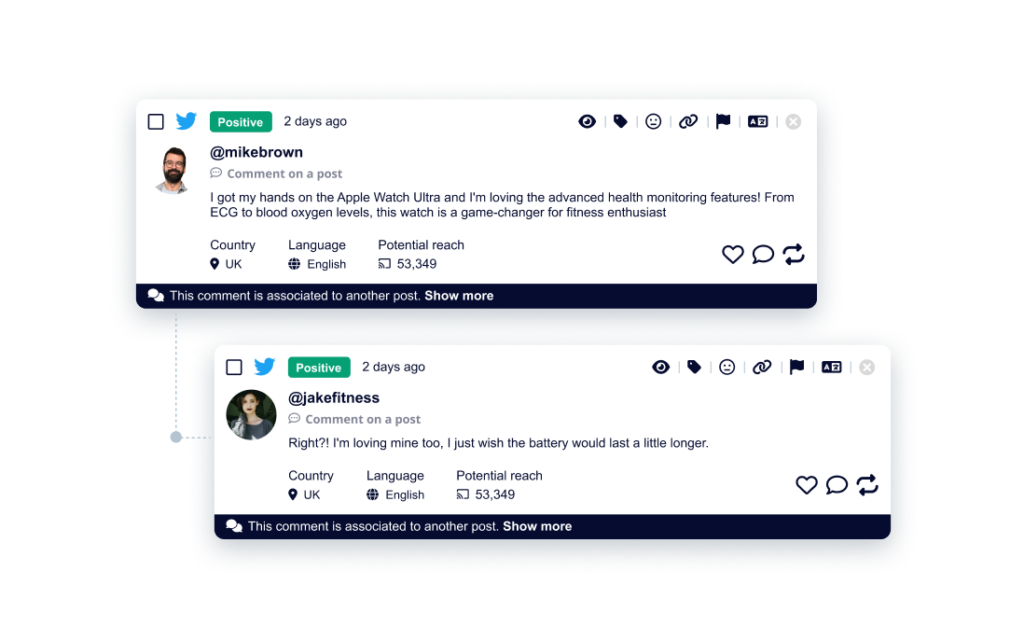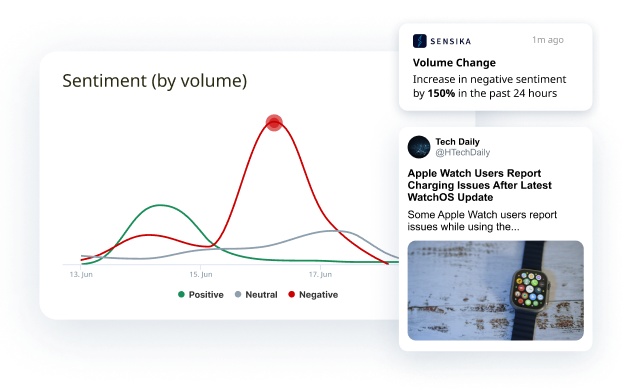In our fast-paced digital world, where information moves at the speed of light and opinions are formed in an instant, the concept of reputation has undergone a seismic shift. No longer confined to the realms of personal interactions and local gossip, it has found a new, boundless domain on the internet. Here, a business’s reputation is not just shaped but is dramatically amplified, leaving a profound mark on its future prospects.
Consider this common scenario: a potential client, keen on making a well-informed business decision, turns to the internet for insights. The journey through search engines leads them to an array of reviews, testimonials, and social media discussions. This plethora of digital content holds immense power in shaping their decision-making process. In this digital milieu, a company’s online reputation becomes a crucial determinant of its success, impacting its growth trajectory or potentially leading to its stagnation.
Welcome to the intricate world of Online Reputation Management, a strategic necessity in today’s business environment.
Table of contents
- The Definition and Scope of Reputation Management
- The Impact of Reputation on Businesses
- The Benefits of Effective Reputation Management
- Real-World Examples of Reputation Management in Action
- Expanding on Reputation Management Strategies
- Leveraging Tools and Resources for Reputation Management
- Crafting a Comprehensive Reputation Management Plan
- Conclusion
The Definition and Scope of Reputation Management
Online reputation management is the art of monitoring, influencing, and maintaining a positive reputation for individuals, brands, or organizations. In today’s digital age, this practice has assumed an unprecedented level of importance. Online platforms have become pivotal in shaping public opinion, making online reputation management a critical component of any business strategy.
This discipline involves controlling the narrative about a person or business online, encompassing social media management, online reviews, news articles, blog posts, and other digital content. The goal is straightforward yet profound: to cultivate and maintain a positive online image, to address and mitigate negative feedback, and to build enduring trust and credibility with your target audience.
The Impact of Reputation on Businesses
А business’s online reputation wields significant influence over its success. A robust online reputation can lead to heightened customer trust, improved brand perception, and increased customer acquisition. Conversely, a tarnished online reputation can result in lost customers, reduced sales, and irreparable harm to brand credibility.
Online research has become a standard step in the consumer decision-making process. Negative reviews or unfavorable online content can effectively deter potential customers. Therefore, proactive online reputation management is vital for businesses to project a positive image and effectively address any negative perceptions.
The Benefits of Effective Reputation Management
Effective online reputation management can unlock a host of benefits for businesses:
Building Trust and Credibility: A strong online reputation establishes trust and credibility. Positive reviews and a robust online presence signal reliability, encouraging potential customers to engage with your brand.
Enhancing Customer Acquisition: A positive reputation acts as a magnet for new customers. Recommendations and positive online sentiment can significantly boost customer acquisition rates.
Improving Brand Perception: Online reputation management allows businesses to positively influence their brand perception. Proactively addressing feedback and engaging with customers contributes to a more favorable brand image
Equipping for Crisis Management: A well-managed online reputation prepares businesses to effectively address potential crises. Timely and appropriate responses to negative situations can mitigate the impact of bad publicity.

Real-World Examples of Reputation Management in Action
How Starbucks Addressed a Racial Bias Incident
In 2018, Starbucks faced a crisis that tested its reputation. After two African American men were arrested in a Philadelphia store for waiting without ordering, the company faced widespread accusations of racial bias. This incident led to protests and boycotts, putting Starbucks’ commitment to diversity and inclusion under scrutiny. In response, Starbucks took several decisive actions:
Closing for Training: Starbucks closed over 8,000 stores for a day to conduct anti-bias training for its employees, a bold move demonstrating its commitment to addressing the issue.
Public Apology and Policy Changes: The company issued a heartfelt apology, met with the affected individuals and their lawyers, and revised its policies, allowing non-paying guests to use its facilities.
Promoting Diversity and Inclusion: Starbucks launched initiatives to enhance diversity and inclusion, hiring more people of color, collaborating with civil rights groups, and supporting social causes.
By taking swift, sincere, and comprehensive actions, Starbucks managed to recover its reputation, showcasing its dedication to social responsibility.
Domino’s Pizza’s “Pizza Turnaround” Campaign
Domino’s Pizza faced a reputation crisis in 2009, marked by low customer satisfaction and negative publicity from a viral video showing employees tampering with food. The company’s response was a masterclass in reputation management:
Admitting Flaws and Revamping Products: Domino’s acknowledged its shortcomings and completely overhauled its pizza recipes, demonstrating transparency and commitment to quality.
Engaging with Customers: The “Pizza Turnaround” campaign was built on customer feedback. Domino’s invited customers to share their thoughts, fostering a sense of participation and community.
Candid Marketing Approach: The campaign featured Domino’s executives and chefs directly addressing negative feedback, a move that humanized the brand and rebuilt customer trust.
This approach led to a remarkable turnaround, with increased sales and customer loyalty, illustrating the power of honesty and customer engagement in reputation management.
Lego’s Embrace of User-Generated Content
In the early 2000s, Lego faced financial struggles and a disconnect from its core audience. The company’s strategic pivot to embrace user-generated content (UGC) marked a significant turnaround:
Leveraging Fan Base: Lego launched platforms like Lego Ideas and Lego Masters, encouraging fans to submit and share their own creations, effectively utilizing its loyal community.
Partnerships and Promotion: By collaborating with influencers and media, Lego amplified the reach of UGC, enhancing brand engagement and loyalty.
This UGC strategy not only revitalized Lego’s brand but also fostered a strong community, driving innovation and product development.
Nike’s Stand on Social Justice with Colin Kaepernick
Nike’s 2018 campaign featuring Colin Kaepernick was a bold stance in the realm of social justice. The campaign, aligning with Nike’s “Just Do It” motto, sparked widespread debate:
Polarizing Yet Impactful: While the campaign drew both acclaim and criticism, it resonated strongly with Nike’s core demographic, particularly younger and more diverse consumers.
Brand Differentiation and Advocacy: Nike’s decision to stand by its values differentiated the brand, reinforcing its relevance and appealing to a consumer base that values corporate social responsibility.
The campaign ultimately enhanced Nike’s market position, demonstrating the impact of aligning brand values with social causes.
Expanding on Reputation Management Strategies
Successful reputation management relies on several key strategies:
Monitoring Online Mentions: Regular monitoring of online platforms is crucial. It’s essential to keep track of what’s being said about your business, allowing for prompt responses to any negative feedback.
Engaging with Customers: Active engagement with customers through responses to reviews and comments demonstrates a commitment to customer satisfaction, enhancing your reputation.
Providing Exceptional Products and Services: The foundation of a positive reputation is the consistent delivery of high-quality products and services. Customer satisfaction naturally leads to positive reviews and endorsements.
Encouraging and Managing Online Reviews: Prompting satisfied customers to leave reviews and managing these reviews effectively are key. Engaging with both positive and negative reviews shows a willingness to listen and improve.
Creating and Sharing Valuable Content: Establishing thought leadership through valuable content can significantly boost a business’s reputation. This content can include informative blog posts, insightful articles, engaging videos, and infographics.

Leveraging Tools and Resources for Reputation Management
Various tools and resources are available to assist businesses in reputation management:
Social Media Monitoring Tools: Platforms like Sensika, Hootsuite and Sprout Social enable businesses to track social media mentions, reviews, and comments, offering real-time alerts and analytics.
Online Review Management Platforms: Tools like Reviewtrackers and Trustpilot aid in managing reviews across different platforms, providing analytics and response capabilities.
Google Alerts: A free tool that notifies businesses about online mentions of specific keywords or phrases, helping to keep track of brand mentions.
Online Reputation Management Agencies: Professional agencies offer specialized services in monitoring and improving online reputation through various strategies, including content creation and crisis management.
Crafting a Comprehensive Reputation Management Plan
Developing a comprehensive reputation management plan involves several steps:
Audit Your Current Online Reputation: Begin by conducting a thorough audit of your online reputation. Assess your presence on social media, review sites, and search engine results. Understand the current perception of your brand among your target audience.
Set Clear Reputation Objectives: Define clear objectives for your reputation management efforts. These could include improving customer satisfaction scores, increasing positive reviews, or enhancing your brand’s visibility online.
Develop a Response Strategy: Create guidelines for responding to both positive and negative feedback. This strategy should include response timelines, tone of voice, and escalation procedures for handling more serious issues.
Implement Ongoing Monitoring: Set up systems for ongoing monitoring of your online reputation. This should include regular checks of review sites, social media channels, and Google Alerts.
Engage in Proactive Reputation Building: Don’t just respond to what’s out there; actively build a positive reputation. This can involve encouraging happy customers to leave reviews, participating in community events, or publishing valuable content that positions your brand positively.
Measure and Adjust Your Strategy: Regularly measure the effectiveness of your reputation management efforts. Use tools to track changes in customer sentiment, review scores, and online mentions. Adjust your strategy as needed based on these insights.
Conclusion
Online reputation management is no longer an optional endeavor but a crucial element of business strategy, especially in the digital age. A well-managed online reputation can open doors to new opportunities, foster trust with your audience, and provide a competitive edge. By understanding its importance, leveraging the right tools and strategies, and continuously monitoring and adapting your approach, you can ensure that your business’s reputation remains a valuable asset in achieving long-term success.
Book a demo with us today, and let us show you how our cutting-edge tools and strategies can help you build and protect your online reputation.



